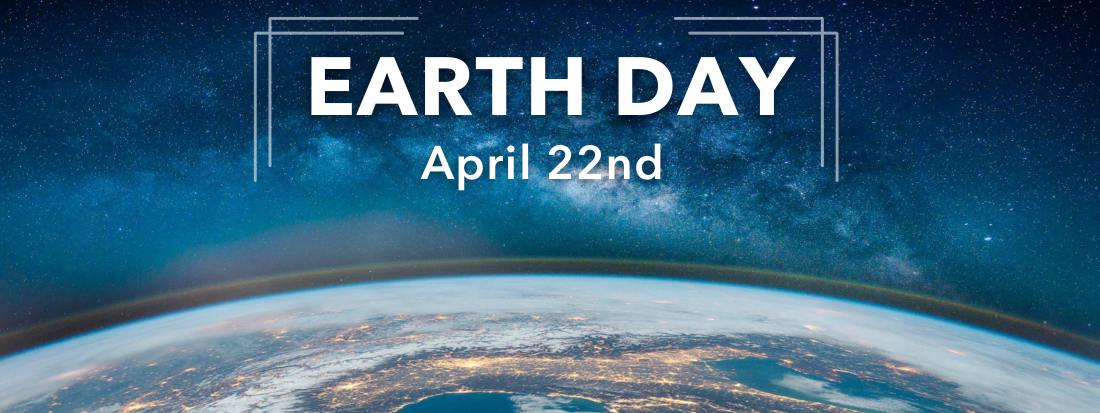
The Real Significance of Earth Day
Robert Decker
As the sun rises on another Earth Day, we are presented with a unique opportunity to connect with our planet and embrace our responsibility to safeguard its well-being. This global celebration, uniting millions around the world, underscores the importance of environmental stewardship and the power of individual actions in shaping a greener, more sustainable future. In this blog post, we will journey through the origins of Earth Day, examine its enduring relevance, and discover practical steps each of us can take to be champions for our planet's health and longevity. Together, let's honor Earth Day by transforming our everyday choices into lasting, positive change.
Each year on April 22, we pause and remember just who the boss is around here, our planet. Without it, where would we be? Certainly not here. Earth Day reminds us of the amazing natural resources we have all around us – air for our lungs, water to quench our thirst, and food-producing soil to sustain us – not to mention the inexplicable beauty of our landscapes.
In 1962, the New York Times bestseller Silent Spring represented a watershed moment in the collective consciousness. It raised public awareness and concern for living things, about the dangers of pesticides and the environment, and the important link between pollution and public health. Subsequent environmental disasters such as an oil spill and fires brought the message home.

President Richard Nixon and First Lady Pat Nixon plant a tree on the White House South Lawn to recognize the first Earth Day.
By White House Photo Office - US Government, Executive Office of the President
This date marks the anniversary of the birth of the environmental movement in 1970. At that time, a burgeoning public awareness about the state of our planet was emerging and it needed a voice. People were beginning to realize what scientists had known for years – that inefficient automobiles were consuming large amounts of leaded gas, industries were belching sludge and smoke with little regard to the consequences, and the smell of air pollution was incorrectly regarded as a sign of prosperity.
But Why April 22?
The inaugural Earth Day was first suggested by Wisconsin Senator Gaylord Nelson along with San Francisco activist John McConnell in 1970. They needed lots of activists to spread the message about the declining state of the natural world; those similar to the anti-war activists, and what better way to find them than at colleges? So they needed a day that fell in between spring break and final exams for most universities, when students would not be distracted by those very important events. Their Earth Day event turned out into a roaring success, and from then on, calendars began printing Earth Day on April 22nd, so despite efforts of various groups to change the day to their advantage, April 22nd stuck.
Earth Day Goes Global in 1990
A group of environmental leaders approached organizers to expand the effort in 1990, which culminated in nearly 200 million people over 141 countries in lifting environmental issues to the world stage. It eventually paved the way for the 1992 United Nations Earth Summit in Rio de Janeiro and President Clinton to award Senator Nelson the Presidential Medal of Freedom for his role as Earth Day founder.
Shouldn’t Every Day be Earth Day?
Over the years, Earth Day’s popularity waxed and waned, and some would argue that every day should be Earth Day. But with particular renewed interest around events such as the Exxon oil spill and other such disasters, the Earth Day surrounding those events seemed to be more poignant. Today however, with the mainstream media shouting about climate change and the scientific data that clearly backs it up, Earth Day is gaining a little more traction every year. Now the normality has shifted to eco-friendly products, sustainable programs at the local level, and even eco-friendly travel. Earth Day and what it represents has weaved its way into the fabric of the collective conscious.
Looking for ways to celebrate Earth Day with the National Park Service? Here are a few suggestions to get you started...
- Learn about earth sciences—Explore nature in national parks to gain knowledge about the planet's incredible resources preserved for current and future generations.
- Be a steward—Each individual person can make an impact preserving earth's resources through individual volunteering keeping natural spaces clean and using Leave No Trace principles when visiting national parks.
- For kids—Go on an adventure learning about nature by becoming a Junior Explorer!
Join the growing community of 125k+ National Park enthusiasts to receive insider deals and updates.
